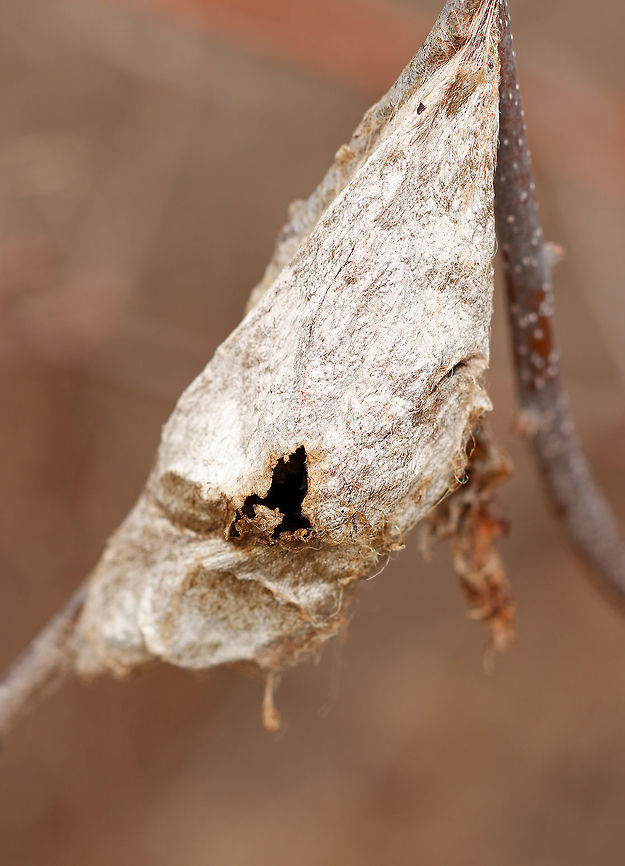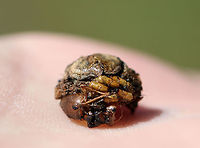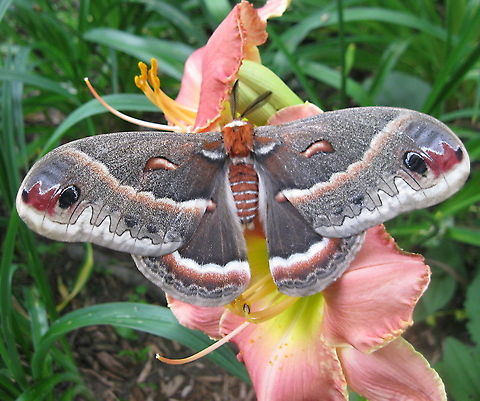
Parasitized Cecropia Moth Cocoon - Hyalophora cecropia
Parasitoids are a significant problem for cecropia moths. Some species of wasps and flies lay their eggs on young cecropia caterpillars. The eggs hatch into larvae, which then consume the internal organs and muscles of the caterpillar. The parasitoid pest releases chemicals that actually override the regulatory mechanisms of the caterpillar, and once the parasitoid has grown enough, it induces the caterpillar to pupate. Once the caterpillar pupates, the parasitoid larvae themselves pupate and kill the cecropia pupa. When they are ready to emerge as adults, they make a hole in the cocoon, and fly away.
**I went back to this spot a couple weeks after spotting the cocoon. I cut it open and found the remnants of the parasitized pupa inside:


The Cecropia Moth is North America's largest native moth. It is a member of the Saturniidae family, or giant silk moths. Females with a wingspan of six inches or more have been documented. It is found as far west as the Rocky Mountains and north into the majority of Canadian provinces. The larvae of these moths are most commonly found on maple trees, but they have been known to feed on cherry and birch trees among many others.
